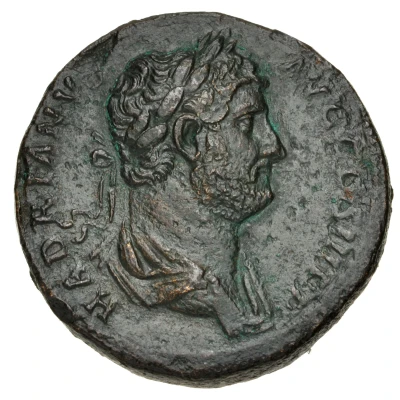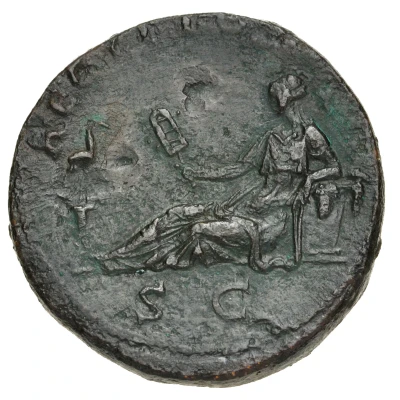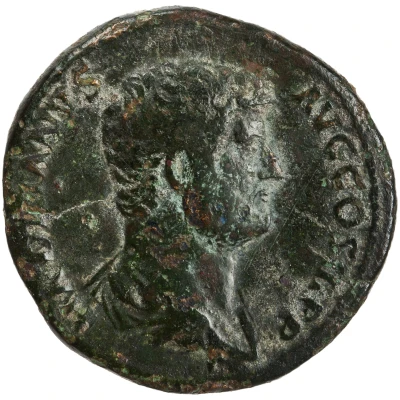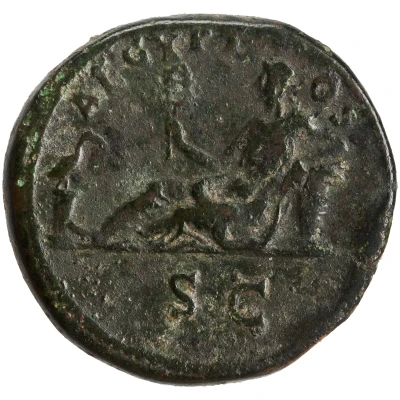


© Classical Numismatic Group, Inc.
Sestertius - Hadrian AEGYPTOS S C; Egypt
| Orichalcum | 25 g | 32.5 mm |
| Issuer | Rome › Roman Empire (27 BC - 395 AD) |
|---|---|
| Emperor | Hadrian (Publius Aelius Hadrianus) (117-138) |
| Type | Standard circulation coin |
| Years | 130-133 |
| Value | 1 Sestertius = ¼ Denarius |
| Currency | Denarius, Reform of Augustus (27 BC – AD 215) |
| Composition | Orichalcum |
| Weight | 25 g |
| Diameter | 32.5 mm |
| Shape | Round (irregular) |
| Technique | Hammered |
| Demonetized | Yes |
| Updated | 2024-10-06 |
| Numista | N#256077 |
|---|---|
| Rarity index | 100% |
Reverse
Aegyptos reclining left, holding sistrum and resting on fruit basket; to left, ibis, usually on a low column.
Script: Latin
Lettering:
AEGYPTOS
S C
Translation:
Aegyptos. Senatus Consultum.
Egypt. Decree of the senate.
Comment
Source: Online Coins of the Roman Empire (OCRE)Interesting fact
The Sestertius coin , which features Hadrian and was minted in Egypt during his reign (130-133 AD), is made of a metal called Orichalcum. Orichalcum was a type of brass alloy that was highly valued in ancient times for its durability and resistance to corrosion. It was often used to mint coins, but it was also used in the construction of buildings and other structures. In fact, the famous Pantheon in Rome was built using Orichalcum, which is one reason why it has remained standing for nearly 2,000 years.

